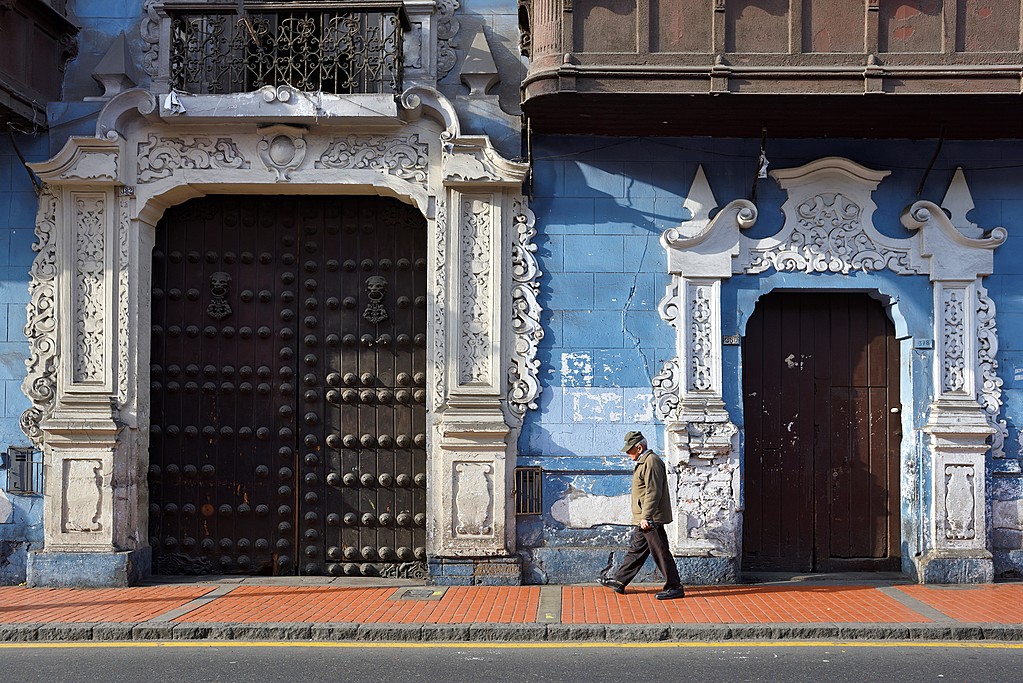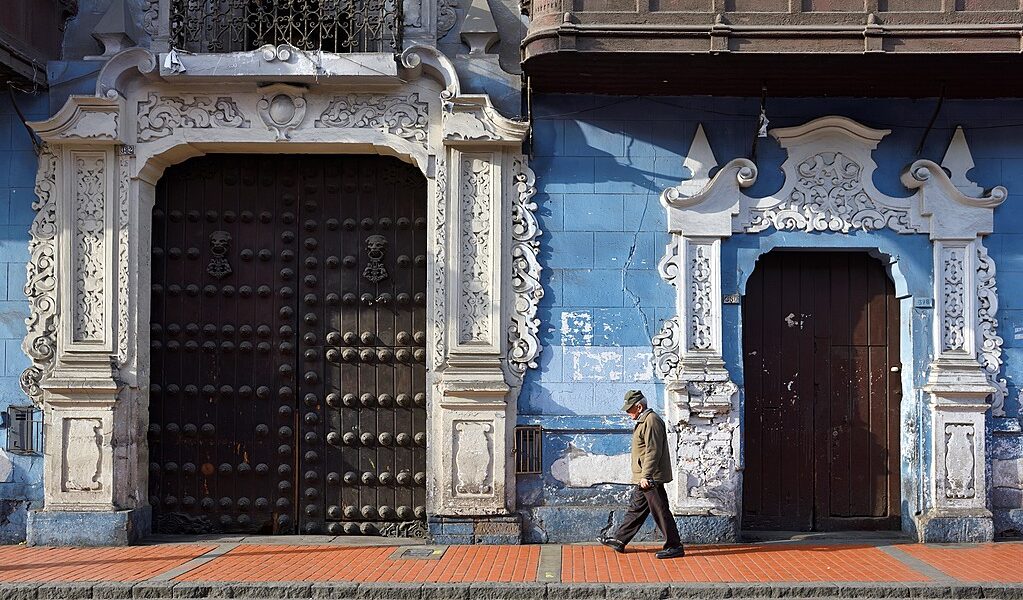
If it’s your first time visiting Peru, let this FAQ put your mind at ease concerning the practical considerations of your trip.
## Exploring Peru: A Comprehensive Guide for First-Time Travelers
Peru, a land of ancient mysteries and breathtaking landscapes, is rapidly becoming a must-visit destination for travelers seeking more than just the typical tourist experience. While the allure of the famed lost Inca city, that magnificent 800-pound gorilla of historical sites, once dominated the Peruvian narrative, today’s visitors are venturing far beyond, discovering the diverse treasures hidden in every corner of this South American gem. From the vibrant coastal metropolis of **Lima** in the south to the lush, untamed reaches of **Iquitos** at the heart of the Amazon basin, Peru offers a captivating tapestry of natural wonders and cultural experiences waiting to be explored.
If you’re considering your first foray into this captivating country, you likely have a multitude of questions. Peru’s unique geography, encompassing a wide array of eco-regions, from dense tropical jungles teeming with life to soaring highland mountain ranges crowned with snow-capped peaks, can seem daunting to navigate. To help you prepare for your adventure, we’ve compiled a comprehensive guide filled with essential practical information. Arming yourself with this knowledge will empower you to make the most of your journey through this breathtaking country.
### Visa Requirements: Your Passport to Peruvian Adventure
The good news is that traveling to Peru is relatively straightforward when it comes to visa requirements. For citizens of the United States, Canada, the European Union, Australia, and New Zealand, a tourist visa is granted upon arrival. This means you can enter the country without needing to apply for a visa in advance.
Upon arrival, immigration officials will determine the length of your permitted stay. Keep in mind that the maximum duration you can stay in Peru as a tourist is 183 days within each calendar year. Unfortunately, Peru does not offer visa extensions, so it’s essential to plan your trip accordingly.
To ensure a smooth entry, you must present a passport that is valid at the time of your arrival. Additionally, your passport should have at least one blank page available for the entry stamp. Immigration authorities may also request proof of onward travel, such as a return ticket or evidence of your plans to leave the country before your visa expires.
### Vaccinations: Protecting Your Health in Peru
While Peru doesn’t mandate specific vaccinations for entry, health organizations strongly recommend certain immunizations to safeguard your well-being. Vaccinations for Hepatitis A and Hepatitis B are generally advised for travelers to Peru. Furthermore, the Yellow Fever vaccine is particularly recommended for those planning to visit jungle areas located below 7,500 feet in altitude. These regions are considered to be at higher risk for Yellow Fever transmission. Consulting with your doctor or a travel health specialist before your trip is always a good idea to determine the most appropriate vaccinations for your individual circumstances.
### Zika Virus: Exercising Caution and Awareness
While the risk of contracting the Zika virus in Peru is considered minimal, it’s important to exercise a degree of caution and stay informed. Since 2016, there have been confirmed cases of the Zika virus in Peru, although these cases have been sporadic.
The International Association for Medical Assistance to Travelers (IAMAT) has recently confirmed cases in the **Loreto** and **Chincha** regions of the country. In light of this, the Centers for Disease Control (CDC) updated its travel guidelines in 2017, recommending that pregnant women avoid traveling to countries with a Zika presence.
It’s worth noting that the mosquitoes that typically carry Zika are not found at altitudes above 6,500 feet, which excludes the higher-altitude regions of Peru, including areas like **Cusco** and the **Sacred Valley**. Moreover, numerous publications, including Sciencemag.org, have reported a significant decline in Zika cases across Latin America in recent years, suggesting that the risk of contracting the virus is currently low. Nonetheless, staying informed about the latest health advisories and taking precautions such as using mosquito repellent can help minimize your risk.
### Best Time to Visit: Unveiling Peru’s Seasonal Charms
The dry season in Peru is widely considered the peak season for tourism. During this period, the country experiences minimal rainfall, and the skies are typically clear, providing ideal conditions for hiking, sightseeing, and exploring the mountains. The dry season also coincides with summer vacations in North and South America, as well as Europe, leading to a surge in tourist activity. If you plan to visit during this time, it’s essential to book your tours and accommodations several months in advance to secure your desired options.
However, the optimal time to visit Peru can vary depending on the specific region you intend to explore. The coastal areas, including **Lima**, experience a mild, temperate climate year-round, while the highlands, such as **Cusco** and the **Sacred Valley**, have distinct wet and dry seasons. The Amazon rainforest, including regions near **Iquitos**, is hot and humid throughout the year, with the wet season bringing increased rainfall. Researching the specific climate patterns of the areas you plan to visit will help you determine the best time to travel for your desired activities.
### Currency and Exchange Rates: Navigating Peruvian Finances
The official currency of Peru is the *sol*. At the time of writing, the exchange rate was approximately 3.24 Peruvian soles to one US dollar. Unlike Ecuador, where US dollars are widely accepted, most businesses in Peru are unlikely to accept dollars as a form of payment, although some establishments may make exceptions.
Given Peru’s prominent status as a major tourism destination, ATMs are readily available throughout the country, particularly in urban areas and popular tourist hubs. In addition to ATMs, the widespread adoption of EMV smart-chip credit cards makes withdrawing cash and making purchases by card both convenient and secure.
### Peruvian Cuisine: A Culinary Adventure
Peru boasts a remarkably diverse and flavorful cuisine, influenced by indigenous traditions, Spanish colonization, and various immigrant cultures. From fresh seafood ceviche to hearty stews and exotic fruits, Peruvian cuisine offers a culinary adventure for every palate. Popular dishes include *lomo saltado* (stir-fried beef with onions and peppers), *ají de gallina* (creamy chicken stew), and *causa rellena* (layered mashed potatoes with fillings). Exploring the local markets and trying street food is a fantastic way to immerse yourself in the authentic flavors of Peru.
### Family-Friendly Activities: Creating Lasting Memories
Peru is a fantastic destination for families with children of all ages. The country offers a wide array of family-friendly activities, ranging from interacting with adorable llamas on farms to exhilarating sandboarding adventures and tranquil kayaking excursions. Families can also engage in unique cultural experiences, such as learning to build with adobe materials, cooking in traditional clay ovens, and making delicious chocolate.
### Electrical Adapters and Converters: Powering Your Devices
Peru operates on a 220-volt electrical system. Typically, the plugs used in Peru are the same as those in North America, featuring two flat prongs. Therefore, you likely won’t need an adapter to plug in your devices. However, it’s crucial to check the voltage requirements of your appliances. If your devices are designed to run on 110 volts (the standard in North America), you’ll need to bring a converter to avoid damaging them.
### **Lima**: A Capital City Worth Exploring
A visit to **Lima** is an absolute must. Most international flights to Peru arrive at **Jorge Chávez International Airport**, the region’s principal air travel hub. To bypass exploring this fascinating capital city would be a missed opportunity. Like many cities and towns across Latin America, **Lima** boasts a **Centro Histórico** (historic center) that’s saturated with colonial history. It was once the principal seat of Spanish colonial power in the New World. Today, the **Centro Histórico** has earned recognition as a UNESCO World Heritage Site, boasting breathtaking architecture that’s particularly striking around the central **Plaza Mayor**. Here, you’ll find the majestic **Government Palace**, the ornate **Convento de San Francisco**, the elegant **Archbishop’s Palace**, and other historical monuments.
### Reaching **Machu Picchu** Without Trekking: Alternative Routes to the Inca Citadel
While hiking the legendary **Inca Trail** to **Machu Picchu** is undoubtedly a memorable experience, offering the unique reward of arriving at the site at sunrise before the crowds, it may not be feasible for everyone due to budget constraints or scheduling limitations. Fortunately, there are several alternative ways to reach this awe-inspiring ancient citadel in the clouds.
The most common method of traveling to **Machu Picchu** from **Cusco** is by train. However, the trains don’t depart directly from the city center, requiring you to travel by car or bus to the train terminal. Most travelers depart from the train station in **Ollantaytambo**, located in Peru’s picturesque **Sacred Valley**, approximately two hours northwest of **Cusco**. Another option is to take the train from the town of **Poroy**, situated about 25 minutes outside of **Cusco**.
Two primary train companies, Peru Rail and Inca Rail, offer services to **Aguas Calientes**, the town closest to **Machu Picchu**. Each company provides a variety of transport options, ranging from standard to deluxe. You can choose to ride in simple coach class or indulge in first-class or even private carriage services, often featuring amenities such as champagne, tasting menus, plush seats, and live music. Panoramic windows offer stunning 360-degree views of Peru’s breathtaking countryside.
### Airport Transportation: Taxis vs. Ride-Sharing Services
Due to the distance and travel time involved, taking a taxi from **Jorge Chávez International Airport** to your accommodation is generally recommended. The airport is located approximately seven miles from **Lima’s** city center and about 10 miles from the popular neighborhood of **Miraflores**. Since most visitors choose to stay in **Miraflores**, the trip can take between 30 to 40 minutes. A taxi ride will typically cost a minimum of US$20, but you should be prepared to pay US$25 or even US$30. While Uber operates in **Lima**, some customers have reported scams and subpar vehicle quality. Opting for a reputable taxi service is the safest and most reliable option.
### Public Transportation: Buses and Airlines
Public city buses in Peru are generally safe, but as a visitor, it’s wise to exercise caution, especially in more touristy areas. Petty theft is a concern, and pickpocketing is not uncommon. For long-distance travel, several reputable bus companies offer comfortable and reliable service. Prices can vary depending on the departure time and destination. Cruz del Sur is a highly regarded bus company, but other companies, such as Superciva, offer competitive fares. However, be aware that a bus trip from **Lima** to **Cusco** can take around 22 hours, which is why many people prefer to fly.
Major airlines like LATAM and Avianca serve destinations throughout the country. Lower-cost national airlines, such as Viva Air Peru, are also available for budget-conscious travelers. The bus companies and airlines mentioned above are generally reliable. However, be wary of ultra-low-cost carriers like Star Perú, whose fleets may be of lower quality, potentially leading to more delays and cancellations.
### Acclimatizing to **Cusco’s** Altitude: Preparing for Thin Air
**Cusco’s** high altitude, sitting at nearly 11,000 feet (3,353 meters), is known for its thin air. While it’s not Mount Everest, the altitude can affect many visitors. Taking precautions can help mitigate the effects of altitude sickness.
Upon arrival, avoid overexertion. Limit walking tours to the main sites in central **Cusco** for the first few days. The city is hilly, so avoid strenuous uphill walks. Drink plenty of water to stay hydrated.
Finally, try the traditional Inca remedy for altitude sickness: coca. You can purchase dried coca leaves or drink *mate de coca* (coca leaf tea), available in most cafés and bars. Chewing coca leaves is also an option. (In its unrefined form, the coca leaf is not a drug. Chewing or sipping it provides energy similar to a few shots of espresso and slightly numbs the mouth.) Coca helps keep altitude sickness at bay, which is why the Incas valued it.
B-2100

